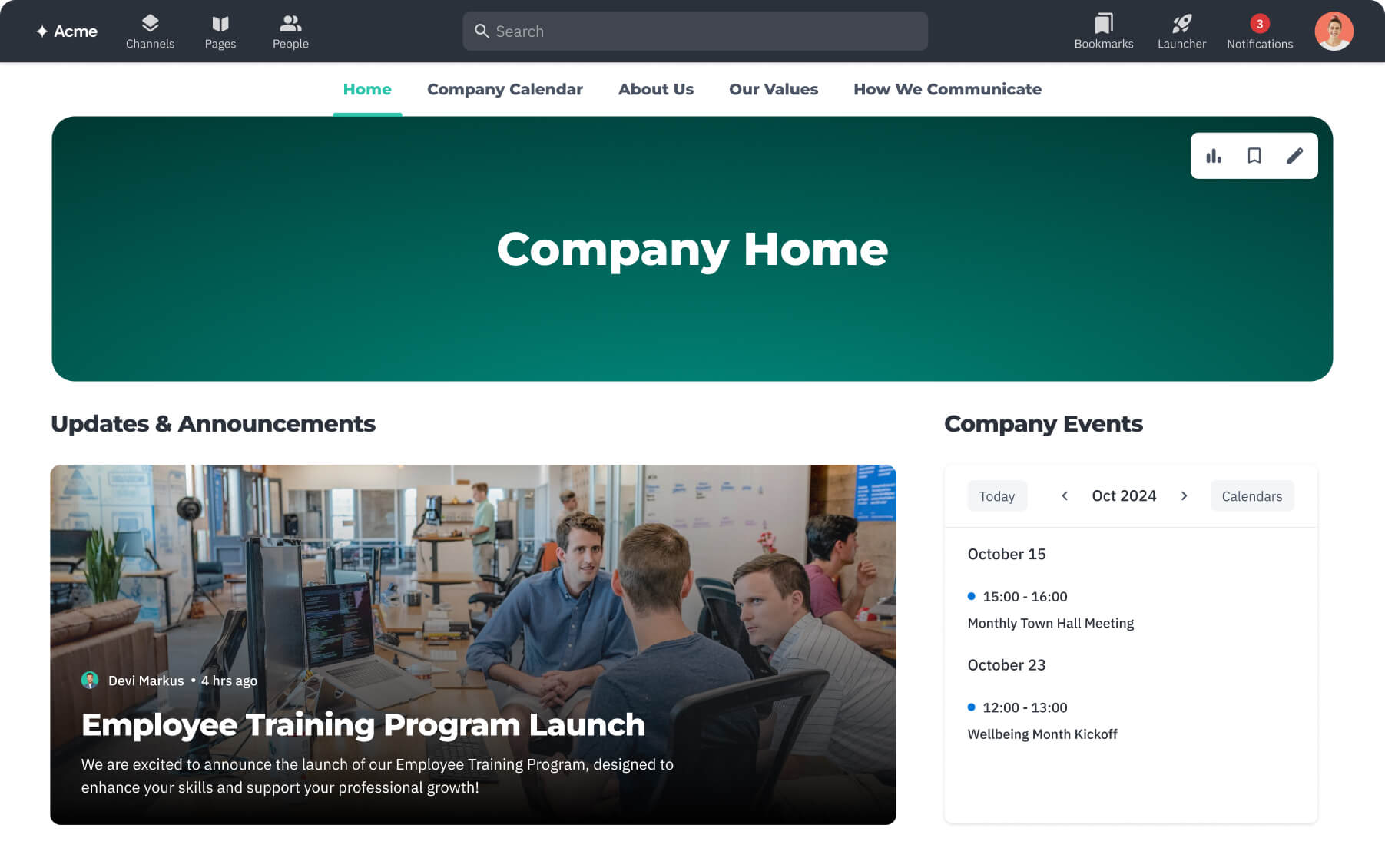
Knowledge Management
The Hidden Costs of Inefficiency: How Knowledge Gaps and Poor Communication Add Up

Start building your digital home with Happeo
Request a demoKnowledge Management
Product
Features
Solutions
Happeo for
Use cases
Resources
Explore
Support
Happeo For
Use cases
Comparisons
Explore
Support
Recent
Having a team with first-class industry knowledge, who are effective communicators is essential to ensure an organization has a competitive edge. Knowledge gaps and ineffective communication can bring an organization to its knees. To ensure that these inefficiencies do not cause your organization to suffer, it is important to take stock and look out for these gaps and communication issues and create solutions to overcome them. This article will help you understand how knowledge gaps in poor communication can affect your organization and how to take care of knowledge gaps.
Knowledge is an organization's greatest tool. Knowledge gaps in the workplace are gaps that hinder productivity as they are areas where employees lack the necessary skills, knowledge, and information to perform their duties effectively. In addition, effective communication across teams is a key team-building tool that contributes to swift conflict resolution, employee satisfaction, and high employee retention while sustaining a positive working environment. Possessing industry knowledge is becoming a key element in the future of business competitiveness.
Having knowledge is one thing, but how organizations utilize their data and information is what sets an organization apart, ensuring a competitive advantage. Making sure that knowledge is available and easily accessible will ensure that an organization's knowledge base does not become worthless.
Knowledge and effective communication are the bedrock of any organization but their effectiveness is highly dependent upon acquiring the necessary skills and knowledge to produce high-quality work and to effectively communicate with key team members to ensure a highly effective working environment. Knowledge gaps can occur at any time in an organization. This is especially true if there is a lack of skills development. Regular training and upskilling are the cornerstone of an organization's growth and development. Thus, if there is a lack of skills development, it can lead to complacency, stagnation, and knowledge gaps. Additionally, an organization needs to conduct regular organizational team assessments from the bottom up. If this is not done, an organization will be unaware of what knowledge gaps exist and this can lead to ineffective communication.
Ineffective communication in the workplace can occur when the leadership does not set clear expectations for its employees. Leading to key information being lost in translation. A commonly unnoticed cause for ineffective communication is employees conforming to their individual biases. This may cause workers to form biased-based conclusions on a particular issue leading to miscommunication, conflict, and a tense working environment. Moreover, in this technologically advanced era, new skills are constantly needed to help employees adapt to a rapidly changing working environment. Some workers struggle to adapt to new technological changes. Not because they are struggling to wrap their heads around these new concepts, it can be because they are inflexible and refuse to adapt to change.
Despite an organization's best efforts, sometimes knowledge gaps will occur. This can happen when a highly skilled and knowledgeable employee leaves the company. This leads to a company's unwritten knowledge, referred to as “tribal knowledge” usually shared through word of mouth, to be lost when an employee leaves the organization. Tribal knowledge is acquired through experience. This is seemingly harmless until a worker hands in their notice. To prevent this kind of knowledge gap, managers need to create a tribal knowledge database where information is stored and easily accessible to avoid knowledge gaps arising when workers leave.
In some cases, if left unchecked, knowledge gaps negatively affect productivity, leading to reduced productivity or poor performance. When there are knowledge gaps employees lack vital skills necessary for them to perform at their full potential. Employees lacking vital industry knowledge may cost an organization major clients current or potential. These gaps can lead to poor quality work, and multiple missed deadlines and it can create an unhealthy environment of stress and frustration.
Because employees will be feeling inadequate, they will be constantly stressed and frustrated about not performing well. This will in turn negatively affect an organization's capacity for growth and success, as employees may be wasting time and repeating tasks that did not meet the organization's standards, as they lack information that would help them complete these tasks effectively and timeously. Furthermore, these gaps can hurt an organization financially as management to close knowledge gaps will be forced to spend huge sums of money on costly training programs, and if these knowledge gaps are not filled it will lead to an organization losing its competitive edge, leading to stagnation.
Management and leadership structures need to look out for the following types of knowledge gaps to ensure that their organizations are not negatively impacted;
These are just a few of the types of knowledge gaps that can occur that organizations need to look out for to ensure that knowledge gaps do not become a major issue causing setbacks and challenges that may cost them for years to come.
There is great value to be found in ensuring that there are little to no gaps in knowledge in the workplace. Limiting knowledge gaps contributes to improved employee performance, and enhanced effectiveness. It also improves employee participation as employees who possess knowledge are confident of their ability to do their job well. This further enhances job satisfaction and reduces the chances of employees jumping ship and seeking greener pastures. When employees have knowledge they become better decision makers as they are making decisions from a highly informed perspective. Closing knowledge gaps has many benefits and has a trickle-down effect.
Well-informed employees are highly flexible and adapt faster to changes in the workplace. Closing knowledge gaps reduces the chances for errors to occur. Finally, it contributes to a healthier and well-rounded workplace culture and environment ensuring that team members feel included, and boosting productivity, collaboration, and workplace participation.
It is vital to ensure that the channels of communication are open from the bottom up in any organization. Managers need to convey detailed messages to employees and also ensure that they keep communication channels open for employees to openly and confidently share their insights or any trouble they may be experiencing. If channels of communication are not clear and open, it can lead to stagnation and little to no company growth.
Ineffective communication negatively affects an organization in many ways. It can lead to problematic client/stakeholder relationships damaging an organization's reputation. If there is poor communication it can lead to employee distrust as employees will not feel heard nor guided by the leadership structures reducing the chances of employees raising any workplace issues they may have. Poor communication can also slow a team down. A failure in communication can cause employees to lack important information needed to perform their tasks effectively, decreasing the quality of their work and increasing the chances for error.
Collaboration is an important element of workplace communication, but if ineffective communication occurs, it can hinder effective collaboration. This can lead to chaotic and highly ineffective collaboration as instructions are constantly being misunderstood and it is highly unlikely that there will be effective collaboration. Inclusivity and diversity are also important elements in the workplace. For inclusivity and diversity to thrive, communication is of the utmost importance. A lack of communication may cause people to shy away from sharing their thoughts, opinions, creativity, and valuable information. Impacting a team's ability to ensure quality output. Bad communication will affect employee confidence leading to feelings of inadequacy, further impacting productivity.
Effective communication in the workplace aims to foster an understanding of key concepts, ensuring inclusivity and transparency at all times. It is also a great way to make sure that employees are consistently producing high-quality work and making sure that they have the right tools at their disposal to do their jobs well. A great thing about effective communication is that it boosts a team's morale, guarantees quality and consistent output, and entrenches a healthy and respectful working environment.
Knowledge gaps and ineffective communication can be dealt with by implementing the following strategies:
Knowledge gaps and ineffective communication can cause a variety of problems if they are not addressed immediately. The danger in organizational gaps and ineffective communication is that their negative effects mostly go unseen until it is too late. If you ensure to conduct regular organizational assessments, you will have key insights into how your organization can remain a key player with a competitive edge like no other.
